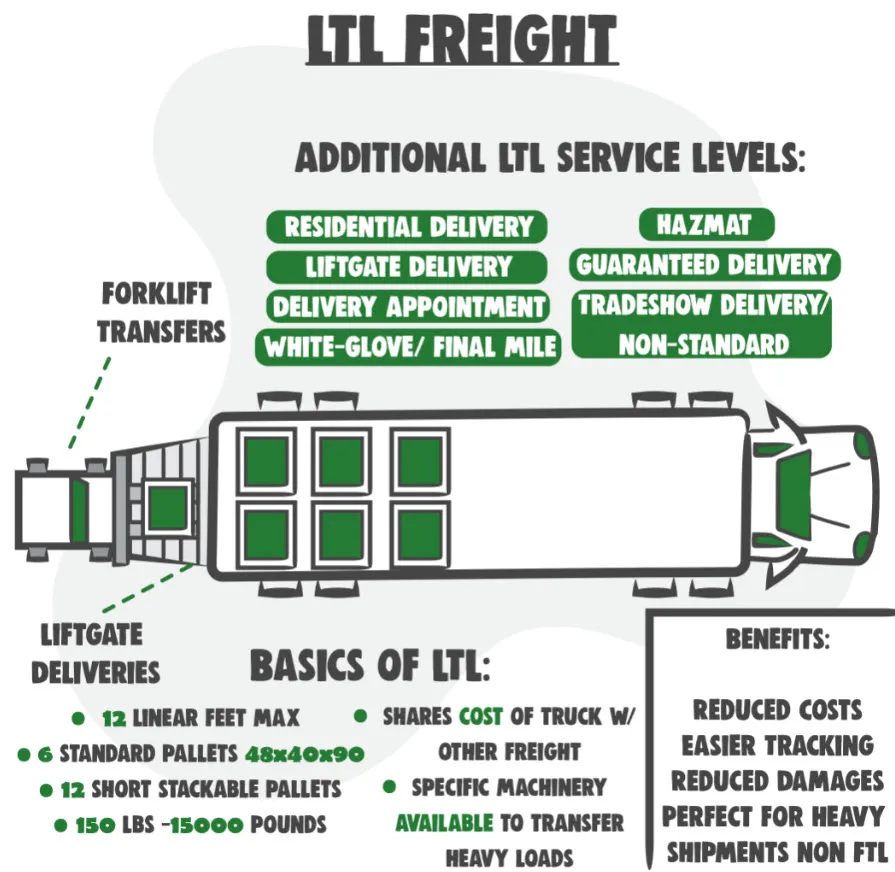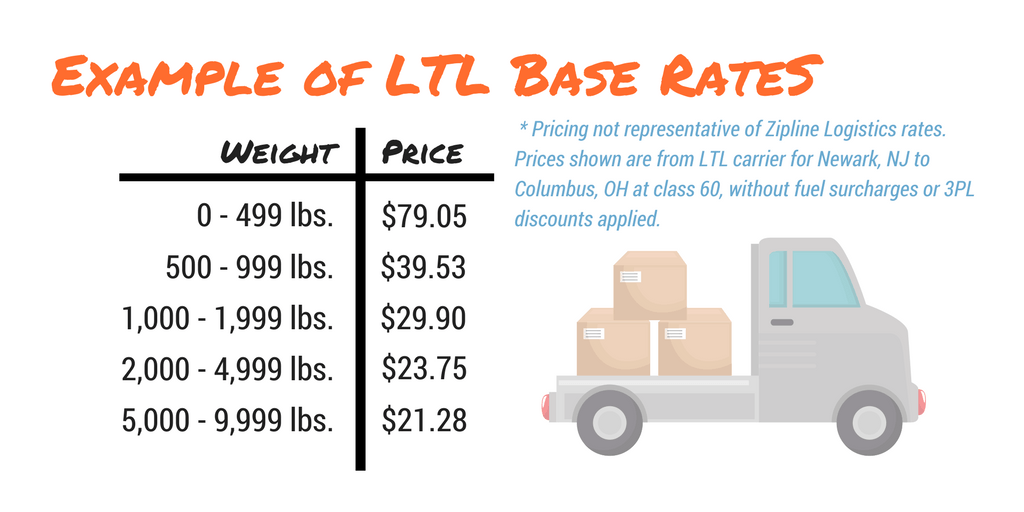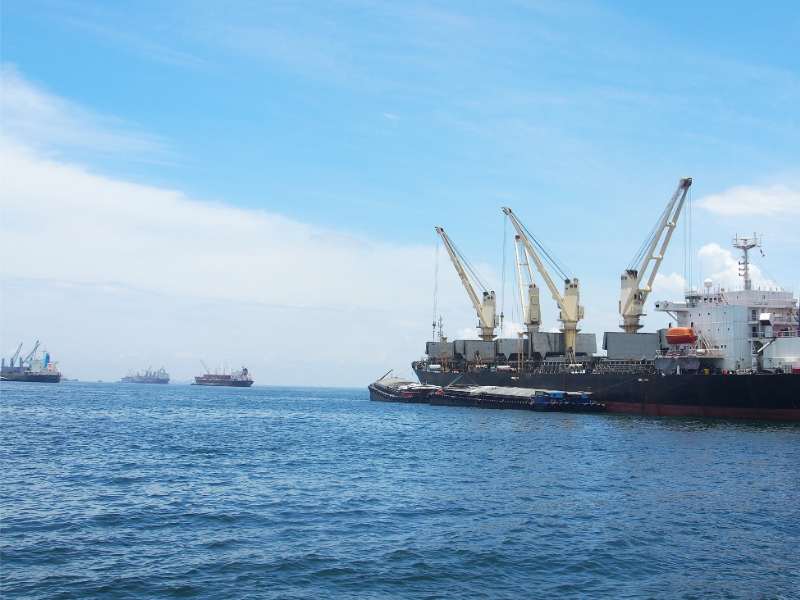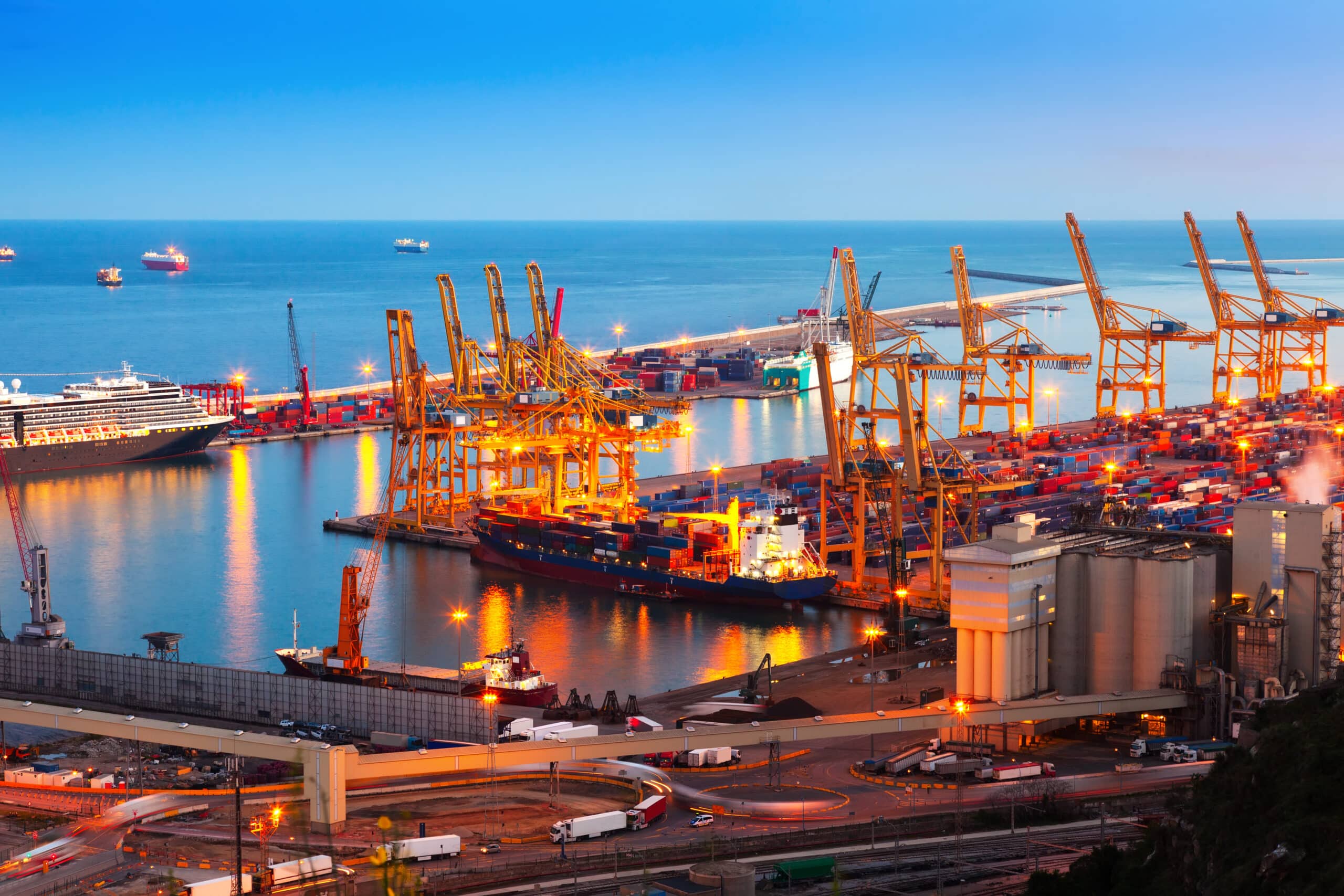LTL shipping rates relies on the National Motor Freight Classification (NMFC), a standardized freight industry pricing classification that establishes uniform parameters for commerce between agents, warehouses and carriers. It is used for LTL shipments in the United States for interstate, intrastate and foreign trade.
If you want to know more about LTL shippping,you can click it.
LTL shipping rates
Typically, rates for LTL shipments start at 0 – 499 lbs. at about $50/100 lbs. and drop to $40/100 lbs. per hundred shipments between 500 – 999 lbs. with greater discounts for heavier loads. Similar to volume discounts …… the more you buy, the more you save.
Less-than-truckload (hereafter referred to as LTL), typically refers to truckloads that are usually less than 10,000 lbs. in a single shipment and take up less than six standard pallet positions.
The shipper pays only for the square footage on the trailer occupied by their shipment, and the other occupants of the trailer space pay the remainder.
LTL shipping rates
Differences between LTL and FTL
While there are some differences between LTL and FTL when it comes to transporting goods, the biggest difference between the two modes of transportation is the way they are loaded. Specifically, here are the differences:
Loading method
LTL goods are loaded from several parts, while FTL transports all the goods in one vehicle.
Cost calculation
the cost of LTL transportation is calculated according to the volume, weight, distance and service requirements of the goods, while FTL only calculates the transportation cost of each vehicle.
Delivery time
LTL transportation usually takes longer to complete because it involves multiple customers, while FTL transportation time is shorter than LTL.
LTL shipping rates
The factors that influence LTL shipping rates
Freight Class
Freight classes range from 50 to 500 based on shipment density, value, stowability, handling, and liability; the lower the class, the lower the rate.
Freight Weight
Most LTL carriers calculate rates using Hundredweight, which is priced per 100 lbs. Carriers calculate rates based on the density class of the shipment, the weight of the shipment, and the distance of the route; the heavier the weight of a single shipment, the less the shipper pays per 100 lbs.
Cargo Volume
The cost of loading a shipment goes up as its volume increases. Even if its actual weight is less than a standard steel bolted pallet, the cost of loading a field hockey stick or gym equipment will be higher due to its large volume and low density.
Distance Traveled
Generally, LTL carriers will charge shippers a higher price as the distance traveled increases.
Xiongda focus on shipping from China to USA for 16 years.
We provide variable plans for air and sea freight from China to USA.
Xiongda can has cooperations with shipping comany, you will get better shipping price.





